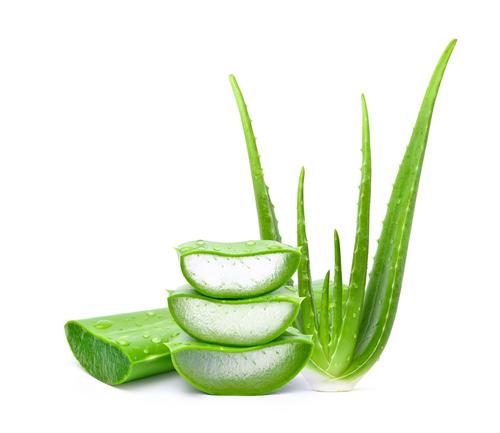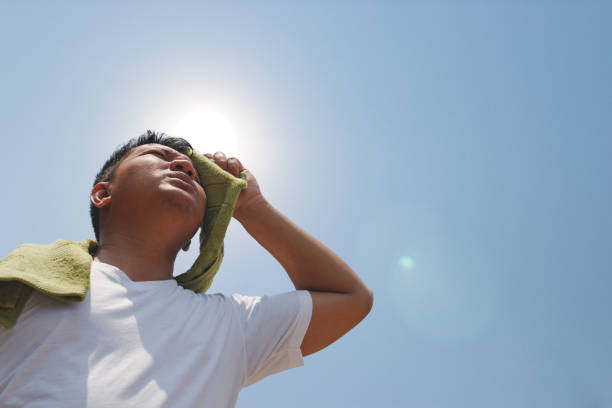Hair loss, Hair thinning, Hair breakage, baldness, Hair damage, Hair transplant, Hair restoration, Dandruff, Hair graft, Alopecia.
Root Cause of Disease
Anyone can lose hair on their head, but it’s more common in men. Baldness typically refers to excessive hair loss from your scalp. Hereditary hair loss with age is the most common cause of baldness. It is normal to lose up to about 100 hairs a day on one’s comb, brush, in the sink or on the pillow. This is the result of the normal hair growth cycle. Hairs will grow for a few years, then rest for a few months, shed, and regrow.
Symptoms
Signs and symptoms of hair loss may include:
- Gradual thinning on top of head. (This is the most common type of hair loss) affecting people as they age.
- Circular or patchy bald spots.
- Sudden loosening of hair.
- Full-body hair loss.
- Patches of scaling that spread over the scalp.
Causes
People typically lose 50 to 100 hairs a day. This usually isn’t noticeable because new hair is growing in at the same time. Hair loss occurs when new hair doesn’t replace the hair that has fallen out.
Hair loss is typically related to one or more of the following factors:
Family history (Heredity)
The most common cause of hair loss is a hereditary condition that happens with aging. This condition is called androgenic alopecia, male-pattern baldness and female-pattern baldness. It usually occurs gradually and in predictable patterns — a receding hairline and bald spots in men and thinning hair along the crown of the scalp in women.
Hormonal changes and medical conditions
A variety of conditions can cause permanent or temporary hair loss, including hormonal changes due to pregnancy, childbirth, menopause and thyroid problems. Medical conditions include alopecia areata (al-o-PEE-she-uh ar-e-A-tuh), which is immune system related and causes patchy hair loss, scalp infections such as ringworm, and a hair-pulling disorder called trichotillomania (trik-o-til-o-MAY-nee-uh).
Medications and supplements
Hair loss can be a side effect of certain drugs, such as those used for cancer, arthritis, depression, heart problems, gout and high blood pressure.
Radiation therapy to the head
The hair may not grow back the same as it was before.
A very stressful event
Many people experience a general thinning of hair several months after a physical or emotional shock. This type of hair loss is temporary.
Hairstyles and treatments
Excessive hairstyling or hairstyles that pull your hair tight, such as pigtails or cornrows, can cause a type of hair loss called traction alopecia. Hot-oil hair treatments and permanents also can cause hair to fall out. If scarring occurs, hair loss could be permanent.
Home Remedies to treat Hair Loss
Remedy – 1: Coconut Oil
Materials: Coconut Oil

Coconut oil improves the microbiota of the scalp, which strengthens the hair follicles and scalp. Coconut oil contains necessary fatty acids that enter the hair shaft and stop hair loss. Coconut oil is predominantly made up of a medium-chain fatty acid called lauric acid. This gives coconut oil a long, straight structure, which is more easily absorbed deep into the hair shaft.
In addition to being good for your scalp, coconut oil also moisturizes your hair. Since it’s easily absorbed, it works better than other oils at repairing dry hair. To get the most out of coconut oil, you’ll probably need to make it a regular part of your beauty regimen. At least twice a week, massage coconut oil into your scalp and let it sit for a few hours or overnight before showering.
Although additional research is needed to demonstrate its effectiveness as a hair growth stimulator, there is little question about its advantages in lubricating the hair shaft and reducing breakage.
Remedy – 2: Amla
Materials: Amla

The phyto-nutrients, vitamins and minerals present in amla help in increasing the scalp circulation and stimulate healthy growth. Vitamin C of amla produces collagen protein.This helps in stimulating hair growth, both length and volume wise. Collagens replace the dead cells of hair follicles with new hair cells.
Amla can nourish, strengthen and condition your hair thereby making it shiny and adding volume to your hair. One amla contains up to 81.2 percent of moisture content in it. Those with dry hair, now you know what to do. Moreover, if you have an oily hair, then use amla powder, it will soak in all the excess oil present on your scalp, along with conditioning it.
Amla juice is great for cleansing the scalp. It nourishes the scalp and makes the hair shiny. The antioxidants present in amla, shields our hair from various hair damages, caused due to it by dust, pollution, smoke, and hair styling tools, etc.
Most of the hair coloring packs contain amla in them as it helps in fighting pigmentation. It also helps in discoloration making the hair long and luscious. Moreover, it is important to keep our hair and scalp clean to avoid pigmentation. Amla and its anti-microbial properties, will not just banish hair odour but it will also remove the germs sticking on your hair.
Try using amla hair mask:
Mix 2 teaspoons of amla and shikakai powder each and add some water to make a smooth paste. Apply this to your scalp and hair and leave it for 45 minutes before shampooing. Follow this at least once a week for better results.
Remedy – 3: Aloe vera
Materials: Aloe Vera

Aloe vera cleanses the hair shaft efficiently, stripping off extra sebum (oil) and residue from other hair products. But aloe vera doesn’t hurt your hair strands while it cleans. Unlike other chemicals in hair products, aloe vera is gentle and preserves the integrity of your hair.
Using aloe vera is a great way to get hair that looks healthier, shinier, and softer. Aloe vera contains vitamins A, C, and E. All three of these vitamins contribute to cell turnover, promoting healthy cell growth and shiny hair.
You can use it as a gel a few times a week to reduce dandruff and unblock hair follicles to promote hair growth. Alternatively, shampoo and conditioner containing aloe vera can be used.
Remedy – 4: Onion Juice
Materials: Onion Juice

Onion juice is a known remedy for hair health, specifically for hair loss. It’s been used for decades as a home treatment. Onion juice may be effective for hair loss in some instances. It may also restore luster and shine. Onion juice could also prevent premature graying of hair and treat dandruff.
The study’s researchers created an onion shampoo by:
- Gathering 100 grams (about 3.5 ounces) of fresh onion bulbs
- Cutting them into small pieces
- Using a food processor to chop the onion into even smaller parts
- Filtering the onion extract by pouring the chopped onion over a muslin cloth
- They then added the onion extract (usually anywhere from 1 to 3 milliliters) to a natural shampoo of coconut, castor, and eucalyptus oils as well as cleansers.
They found when applied to skin for 5 minutes (much longer than your usual shampoo), the mixture didn’t irritate the skin. They also found that the onion shampoo:
- Provided more nutrients and better nourishment to hair follicles.
- Moisturized dry hair and scalp.
- Promoted hair growth.
Other Remedies
Curry leaves
This home remedy has a balanced set of nutrients that can prevent hair fall, help avoid premature graying and stimulate the re-growth of hair follicles. This is a reason why it is one of the best home remedies for alopecia in women. You should place five to six curry leaves in a small pan with coconut oil. You should place this mixture inside a vessel filled with water and then heat the water. When this home remedy gets heated up, then you will find a black residue in it. You should let it cool and store it in an airtight container. You should apply this home remedy at least two times a week. Let it stay there throughout the night, and in the next morning, you should wash it off.
Almond oil
There are not many studies in which it can be proven that almond oil can contribute to hair care, but it is frequently used in products that are increasing hair growth. You should use almond oil frequently because it can reduce dandruff and split ends, and it might consequently stop hair fall in alopecia areata. You should apply almond oil to your hair. Let it stay there through the night, and then shampoo it using lukewarm water.
Fenugreek seeds
One of the main causes of hair loss is the synthesis of dihydrotestosterone. It is known that fenugreek is a strong blocker of this synthesis, and it can encourage hair growth. It is very effective in people who suffer from androgenetic alopecia. You should soak fenugreek seeds overnight. You should grind it with water the next morning and make a paste. You should apply it to your scalp. Let it stay there for about thirty minutes, and then shampoo it.
Mustard oil
It is a known fact that a few spoons of mustard oil can help to keep the baldness due to alopecia at bay. You can find it easily in markets. It can boost hair growth, reduce hair loss and increase the volume of the hair. Also, it goes well with other oils such as coconut and almond oil. You should boil mustard oil. You should crush a few spoons of henna leaves in it and then mix it well. You should let it cool and then strain it. Apply this home remedy to your scalp.
Chinese hibiscus
This home remedy is used for the natural treatment of alopecia areata in women because it can boost hair growth and stop hair fall. Also, it can help to prevent split ends, and it can make your hair look lustrous. You should mix a few petals of Chinese hibiscus in dandelion oil. You should apply this home remedy to your scalp. You should wash it off after fifteen minutes.
Preventions
You can follow a few hair hygiene tips to improve your overall hair health and possibly prevent hair loss.
Avoid hairstyles that pull on the hair
Hair is flexible, but research shows that your hair can only be stretched so much before becoming permanently damaged. Hairstyles like cornrows, tight braids, and ponytails can pull your hair away from your scalp and loosen the bond between your hair and scalp over time.
Avoid high-heat hair styling tools
Using heat to style your hair leaves your hair follicle dehydrated and vulnerable to damage. Hair dryers, hair straighteners, and curling irons can all damage your hair over time by causing moisture in your hair shafts to expand.
Don’t chemically treat or bleach your hair
Chemically treating hair with methods such as bleaching damages hair by splitting protein molecules called keratin. If you’re concerned about hair loss, limit your use of dyes, highlights, peroxide treatments, and perms.
Use a shampoo that’s mild and suited for your hair
The purpose of shampoo is to cleanse your hair of dirt and excess oil. Over-washing with shampoo can potentially harm your hair. Sulfates and some other ingredients have been linked to frizz, scalp dryness, and fragile hair. There’s no evidence that any specific ingredients in shampoo cause hair loss, but they might contribute to less than ideal hair health. If you notice your hair is overly dry or frizzy, try a shampoo that’s as close to all-natural as possible.
Use a soft brush made from natural fiber
Using a soft brush with fibers that are natural can potentially promote healthy oil levels on your hair. The keratin proteins in your hair are stacked like shingles on a roof, so brushing them gently in one direction, starting at the top and continuing through to the ends, can help smooth and condition your hair cuticle. Brushing hair daily can also help you avoid seeing hair clumps in your shower drain.
Try low-level light therapy
Low-level light therapy promotes cell growth and repair. It’s a potentially effective treatment for male- and female-pattern baldness, the most common causes of hair loss in men and women. These genetic conditions cause a certain pattern of hair loss. For men, it starts at a receding hairline or bald spot at the crown. For women, it’s characterised by an overall thinning that often causes a wider part.




